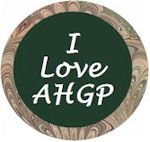|
 |

Part of the American
History & Genealogy Project |
Amelia Stone Quinton 1833 ~ 1926

Was born near Syracuse, New York, of
English ancestry and directly descended from both Pilgrims and
Puritan New England stock. Her father was Jacob Thompson Stone,
and her mother Mary Bennett Stone. In the early days her family
was intermarried with the Adams family and the son of one was
the father of Samuel Adams; another member was aunt to John
Adams, the second president of the United States and a
great-aunt to John Quincy Adams, sixth president Mrs. Quinton's
early education was acquired in one of the female seminaries of
that time.
She spent a year as a teacher in a Georgia Seminary, after which
she became the wife of the Rev. James F. Swanson, a Christian
Minister of that state, whose death occurred within a few years.
After this Mrs. Swanson returned north and taught at a female
seminary in Philadelphia. During this time she turned to
religious and philanthropic work, to which she gave some
valuable years. Her first service in this work was among the
poor and degraded of New York City. One day of the week she
spent in the prison, one in the almshouse, and another in some
infirmary or reformatory for women. One service was a weekly
Bible class for sailors on shore. Very soon she was invited to
go out and represent the Woman's Christian Temperance Union to
organize unions and later was elected by the State Woman's
Christian Temperance Union as a state organizer.
While on a tour in Europe for her health and a rest from her
labors, she met Professor Richard Quinton, a native of London
and lecturer on historical and astronomical subjects in the
institutions of that city. They were married and continued to
reside in London for some time. In 1878 they came to America,
where Professor Quinton resumed his work, lecturing in
Philadelphia, which now became their home. In April, 1879, her
friend, Miss Mary L. Bonney, became deeply stirred on the
subject of national wrongs to the Indians and enlisted the
interest of Mrs. Quinton in this work. Mrs. Quinton had had such
large experience in Christian work that she knew how to bring a
cause before the people. Miss Bonney agreed to supply the means
if Mrs. Quinton would plan and work as the way was opened. She
studied up the subject in the libraries, prepared literature and
petitions, which she circulated, securing many sympathizers and
helpers throughout the United States.
The first petition, an enormous roll three hundred feet long,
was presented to the Congress of the United States in February,
1880. A society was formed, Miss Bonney was elected president;
and the constitution was written by Mrs. Quinton. An executive
board was elected, nominated at her request, by pastors of
churches, and it became the Indian Treaty-Keeping and Protective
Association. Before the end of the year, Mrs. Quinton had
secured thirteen associate organizations in five different
states. Today, the Association, now the Woman's National Indian
Association, has branches, officers or helpers, in forty states
of the Union and more than twenty missions in Indian tribes have
been established, and during 1891, missionary work was done in
fifteen tribes. In 1884, when Miss Bonney retired from the
presidency of the association, Mrs. Mary Lowe Dickinson was
elected to that office; which she held for three years, when
Mrs. Quinton was unanimously elected president of this
association. On one of her tours through the United States, she
bore a government commission and did service in behalf of Indian
education.
Women of
America

Source: The Part Taken by Women in
American History, By Mrs. John A. Logan, Published by The Perry-Nalle
Publishing Company, Wilmington, Delaware, 1912.
|